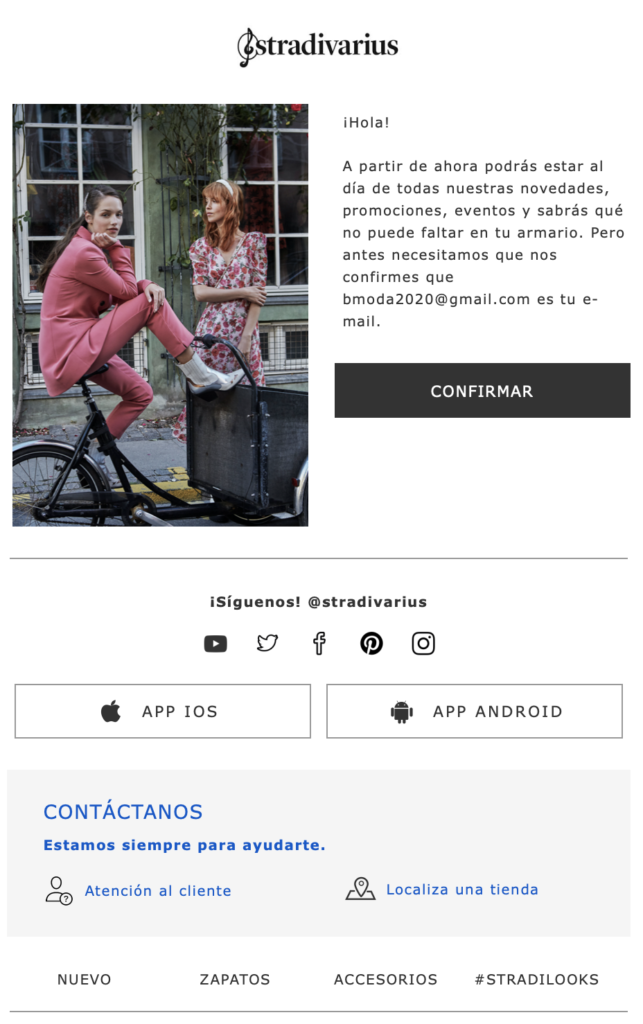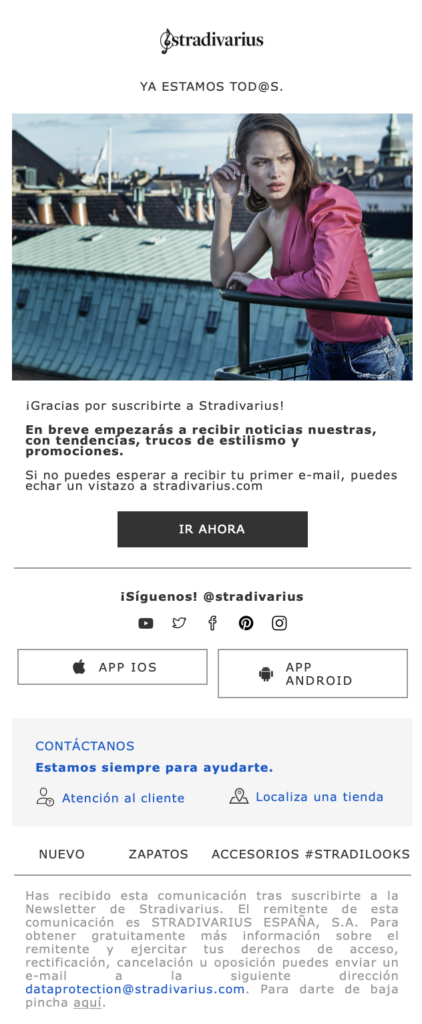Subscription confirmation, double opt-in, welcome email… which is the best option


There are different approaches a brand, company, or organization can take to initiate contact after a new user subscribes to their newsletter: subscription confirmation, double opt-in, welcome email… but which is the best option? Can we combine them? What are the pros and cons of each of them?
The user’s perception of the brand has to be cared for from the very first minute. The first contact with the user via email is more important than it would seem. It determines how the relationship with the user starts and our chances of retaining the interest they had in us when subscribing. We should keep in mind that if the user has decided to sign up now, it is because, right at this moment, they have a real interest in us, and we have to take advantage of that and give a good first impression. Because of that, it is important that, at least, they receive a notification confirming the subscription. That is, however, as we will see, only the most basic form of initial contact:
Subscription confirmation
This notification is automatically sent when a user subscribes to the newsletter. As the name suggests, its purpose is to let the user know via email that the subscription was successful and that, from this point on, they will receive the brand’s newsletters. As we were saying, this is the most basic approach to first contact with the new subscriber. But what are its pros and cons? A positive aspect is that this is a minimally invasive kind of communication, that is to say, it doesn’t push the user to take further steps to complete the subscription; it merely informs of its success. However, a significant drawback is the low impact it will have on the receiver and, what’s more, with this method, we have no way of knowing whether the email address is correct and if we have the user’s consent. We could easily solve this problem by using the next method we will see: Double opt-in. Here is an example from Punto Roma:
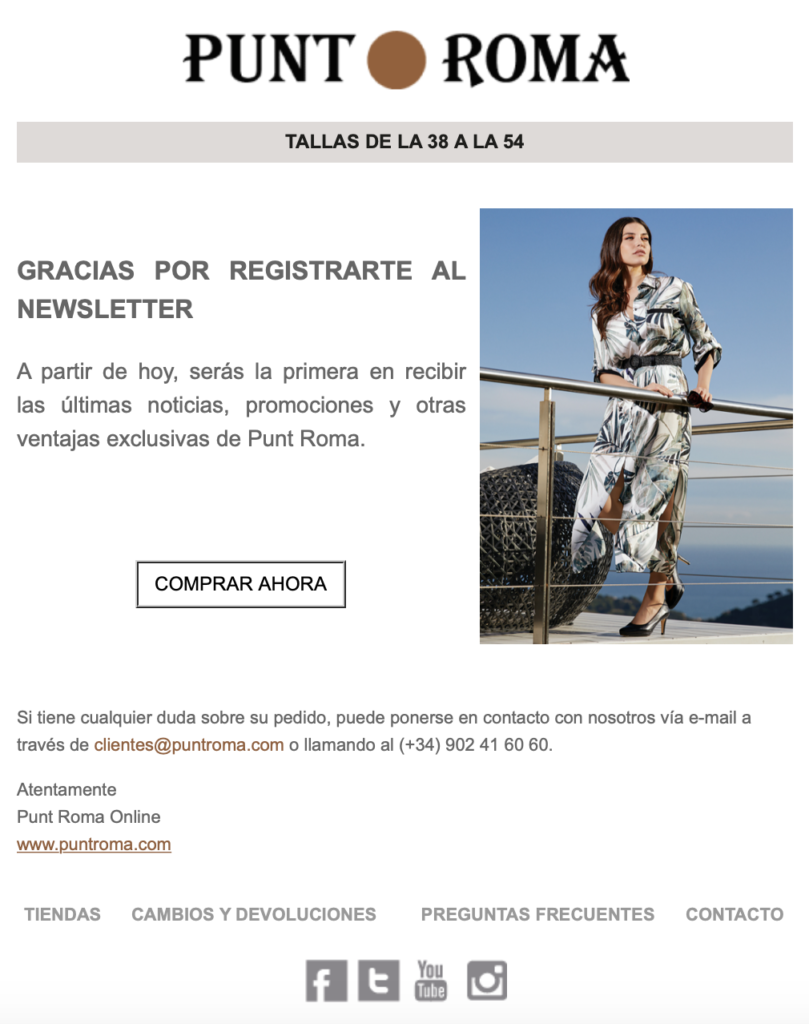
Double opt-in
Double opt-in consists of sending a notification to the user asking them to confirm the subscription. Once the user clicks on the CTA, they are taken to the brand/company’s website and informed that the subscription process has been successful. If the subscription is not confirmed, it will not become effective. Using double opt-in helps us ensure that we are working with a real, quality lead and, most importantly, it helps us avoid clashing with the General Data Protection Regulation. Its disadvantage? We are adding an extra step to the registration process, and if, for whatever reason, the user ends up not validating the subscription, we would lose the lead. Here is an example from ZARA:
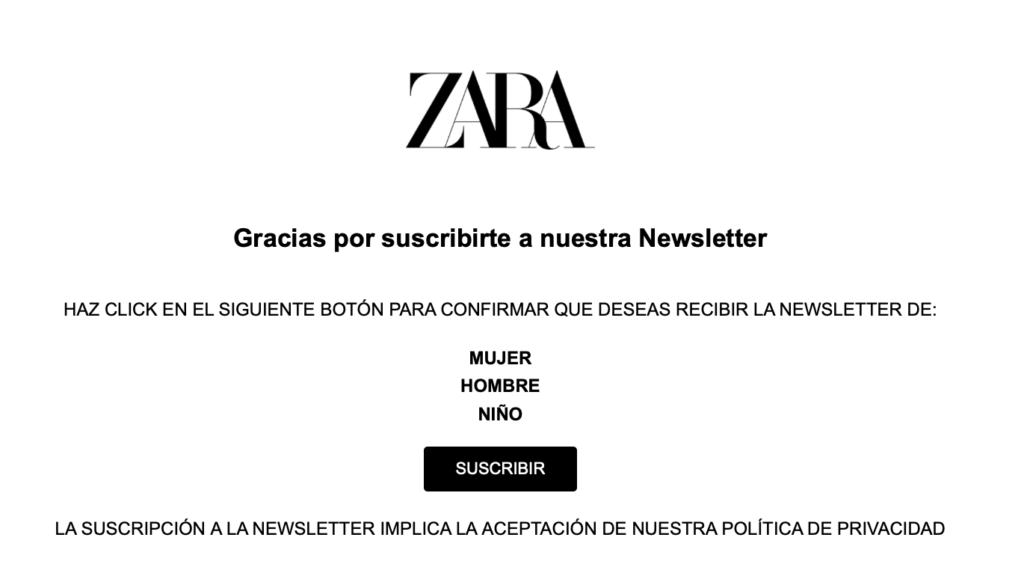
Welcome email
As its name very well suggests, this is an email sent to greet and welcome the new subscriber. Usually, many brands combine welcome and confirmation emails. The result is an email in which the brand confirms the subscription, welcomes the client and offers them some kind of discount or relevant information on the brand/company. A welcome email is more elaborated and curated than a confirmation email, especially on a copy and design level. In fact, this would be an important advantage; it allows the brand to create a more significant first impact while also driving the user to the company’s website. What about the disadvantages? Well, we need to keep in mind that, in the same way that it happens with the subscription confirmation emails, we cannot be sure that we are dealing with a real and quality lead.
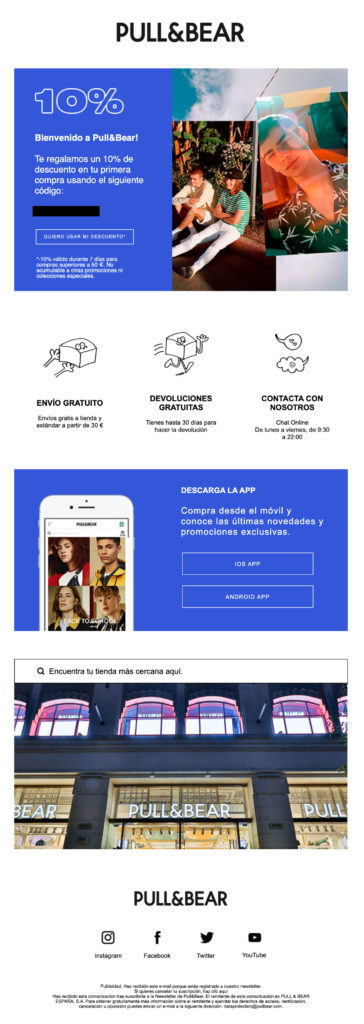
Welcome program
If we are looking to maximize this initial contact with the new subscriber, a welcome program is a well-rounded option. It consists of a group of emails, sent with a specific goal in mind: to incentivize the user to make their first purchase, to get them to add relevant information to their profile that could help us with segmentation and future campaigns’ personalization, or to give them relevant information about the company.
Which is the best option?
It will mainly depend on our priorities, the importance we give to each of the different points we have touched upon in this article, and, especially, on the type of brand/company we are and the products or services we provide. It is our opinion, however, that the winning option would be the combination of double opt-in (with it we make sure the registration is valid and that we really have the user’s consent), and a welcome email or program (a much more enlightening form of contact that a simple confirmation email). Here is an example from Stradivarius:
